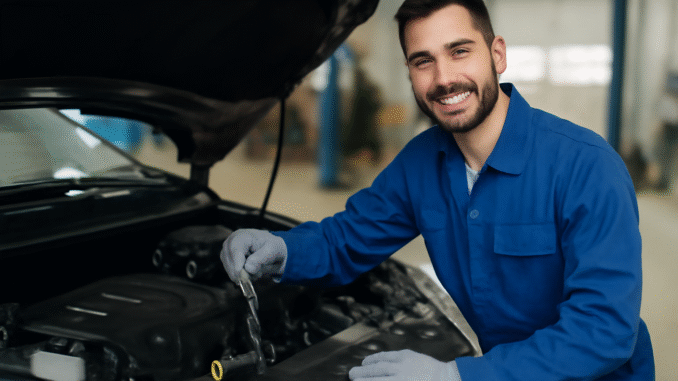
The Ultimate Guide to Car Maintenance: Tips to Keep Your Vehicle Running Smoothly
Owning a car brings freedom, convenience, and pride—but it also comes with responsibilities. Regular car maintenance is one of the most important parts of vehicle ownership. A well-maintained car not only runs smoothly and efficiently but also saves you money in the long run by preventing costly repairs. In this ultimate guide, we’ll cover the essential car maintenance tips every driver should know to keep their vehicle in top condition.
Why Car Maintenance Matters
Routine maintenance is the backbone of vehicle longevity. When you invest in consistent care, you’re not just keeping your car clean—you’re ensuring it runs safely, efficiently, and reliably. Neglecting maintenance, on the other hand, can lead to breakdowns, expensive repairs, and even safety hazards.
Here are the main benefits of regular car maintenance:
- Improved performance: Regular oil changes, air filter replacements, and tire checks help your engine run more smoothly.
- Better fuel efficiency: A well-tuned engine and properly inflated tires reduce fuel consumption.
- Enhanced safety: Proper brake and tire maintenance reduce accident risks.
- Higher resale value: Buyers are more likely to pay more for a car with a complete maintenance history.
- Fewer repairs: Small fixes prevent major issues down the line.
1. Check and Change the Engine Oil Regularly
Engine oil is the lifeblood of your car’s engine. It lubricates the moving parts, reduces friction, and prevents overheating. Over time, oil breaks down and becomes less effective, which can cause engine damage.
Tips:
- Check your oil level every 1,000 miles (or monthly).
- Change the oil and filter every 3,000 to 5,000 miles, depending on your car’s make and model.
- Always use the recommended oil grade found in your owner’s manual.
- Keep an eye on the oil color—dark or gritty oil means it’s time for a change.
Pro Tip: Schedule oil changes with tire rotations to save time and ensure consistent maintenance.
2. Maintain the Cooling System
Your car’s cooling system prevents the engine from overheating. It circulates coolant (antifreeze) through the engine and radiator to manage temperature. Without proper maintenance, overheating can lead to serious engine damage.
Tips:
- Check coolant levels monthly.
- Top off with a 50/50 mix of coolant and distilled water.
- Flush and replace coolant every 30,000 to 50,000 miles.
- Look for leaks or corrosion around hoses and the radiator.
Pro Tip: If your temperature gauge rises above normal, pull over and let the car cool down before checking the coolant.
3. Inspect and Replace Air Filters
Air filters prevent dust and debris from entering your engine and cabin. A dirty filter can reduce airflow, affecting engine performance and fuel economy.
Tips:
- Replace the engine air filter every 12,000 to 15,000 miles.
- Replace the cabin air filter once or twice a year.
- If you drive in dusty or polluted areas, replace filters more frequently.
Pro Tip: A clean air filter can improve acceleration and fuel efficiency by up to 10%.
4. Check Tire Condition and Pressure
Your tires are the only part of your car that touches the road, so they play a vital role in safety and performance. Properly maintained tires provide better traction, fuel economy, and comfort.
Tips:
- Check tire pressure monthly using a reliable pressure gauge.
- Inflate tires to the recommended PSI listed on your car’s door sticker.
- Inspect for uneven wear, cracks, or bulges.
- Rotate tires every 6,000 to 8,000 miles.
- Replace tires when tread depth reaches 2/32 of an inch.
Pro Tip: Use the “penny test” — insert a penny into the tread with Lincoln’s head upside down. If you can see the top of his head, it’s time for new tires.
5. Keep an Eye on the Brakes
Brakes are your car’s most important safety feature. Worn brake pads or malfunctioning components can lead to longer stopping distances or complete brake failure.
Tips:
- Listen for squealing or grinding noises when braking.
- Replace brake pads every 25,000 to 50,000 miles (depending on driving habits).
- Check brake fluid regularly and top up if it’s below the minimum line.
- Have your brake system inspected annually.
Pro Tip: If your car pulls to one side when braking, it may indicate uneven wear or a caliper issue—get it checked immediately.
6. Keep the Battery in Good Condition
Your car’s battery powers everything from the ignition to the lights and electronics. Extreme temperatures, corrosion, or old age can reduce its lifespan.
Tips:
- Check the battery terminals for corrosion and clean them with baking soda and water.
- Make sure the connections are tight and secure.
- Test your battery every 6 months.
- Replace the battery every 3 to 5 years.
Pro Tip: If you notice dim headlights or slow engine cranking, it might be time to replace the battery.
7. Inspect Belts and Hoses
Belts and hoses are often overlooked but are essential for your engine’s function. They connect key components and keep systems like the alternator, air conditioning, and power steering running smoothly.
Tips:
- Check for cracks, fraying, or signs of wear.
- Replace timing belts every 60,000 to 100,000 miles.
- Replace serpentine belts every 40,000 to 70,000 miles.
- Look for leaks in hoses and ensure clamps are tight.
Pro Tip: If you hear a squealing noise when starting your car, it may be a sign of a worn-out belt.
8. Keep Your Car Clean Inside and Out
A clean car isn’t just about looks—it also protects your vehicle’s paint, prevents rust, and maintains value.
Tips:
- Wash your car every two weeks to remove dirt, salt, and debris.
- Wax your car every 3 months to protect the paint.
- Clean the interior regularly and vacuum carpets to prevent odors.
- Use UV protectant on the dashboard to prevent fading and cracking.
Pro Tip: Regular washing prevents corrosion, especially if you live near coastal areas or drive on salted roads.
9. Stay on Top of Fluid Levels
Your car relies on several fluids to function correctly. Neglecting them can cause serious mechanical problems.
Essential Fluids to Check:
- Engine Oil – Lubricates engine parts.
- Coolant – Prevents overheating.
- Transmission Fluid – Ensures smooth gear shifts.
- Brake Fluid – Transfers braking power.
- Power Steering Fluid – Makes steering easier.
- Windshield Washer Fluid – Keeps visibility clear.
Tips:
- Check all fluids monthly.
- Top up as needed and replace fluids according to your car’s schedule.
- Watch for fluid leaks under your car—each color indicates a different problem.
10. Follow the Manufacturer’s Maintenance Schedule
Every car is unique. The best way to maintain yours is by following the maintenance schedule in your owner’s manual. This guide outlines when to service key components and replace parts.
Tips:
- Stick to mileage-based service intervals.
- Keep a maintenance logbook or use a car maintenance app to track services.
- Always use genuine or OEM parts for replacements.
Pro Tip: Regular dealership or certified mechanic servicing ensures your warranty remains valid and your car runs efficiently.
11. Pay Attention to Warning Lights
Modern cars come equipped with dashboard warning lights to alert you when something’s wrong. Ignoring these lights can lead to bigger problems later.
Common Warning Lights:
- Check Engine Light: Possible engine issue—get it scanned.
- Battery Light: Electrical or charging problem.
- Oil Pressure Light: Low oil level or pump issue.
- Brake Warning Light: Check brake fluid or pad wear.
- Tire Pressure Light: Low air pressure in one or more tires.
Pro Tip: Invest in an OBD-II scanner to read diagnostic codes at home and understand issues before visiting a mechanic.
12. Schedule Professional Inspections
Even if you’re diligent with DIY checks, professional inspections are vital. Mechanics can spot issues you might miss, such as alignment problems, exhaust leaks, or suspension wear.
Tips:
- Get a comprehensive inspection at least once a year.
- Have your car checked before long trips.
- Build a relationship with a trusted mechanic for honest and reliable advice.
Conclusion
Car maintenance doesn’t have to be complicated or expensive. With regular attention and preventive care, you can extend your car’s life, improve safety, and save thousands in repairs. Whether it’s checking oil levels, monitoring tire pressure, or following your maintenance schedule, small steps make a big difference.
Remember: A well-maintained car is a happy car—and a happy driver.
By keeping up with these essential maintenance tasks, you’ll enjoy a smoother, safer, and more reliable driving experience for years to come.

